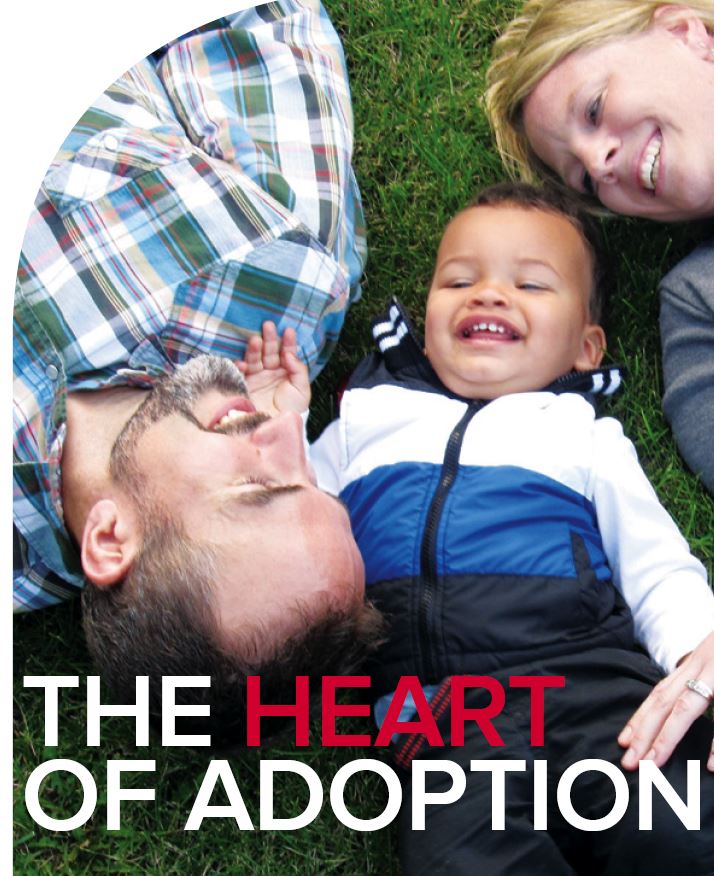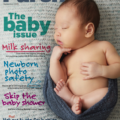Fewer than 24 hours after her son was born, Megan Braun worried she was destined for heartbreak once again. Megan and her husband, Doug, had traveled 1,600 miles from their Brooklyn Park home to meet their newborn son in Tacoma, Wash. And the birth mother seemed to be changing her mind overnight. The carefully arranged adoption agreement forged over months of shared ultrasounds, shared emotions and shared conversations was in peril.
By this point, the Brauns had invested years of effort and their life savings to have a child. When their first attempts at parenthood ended in miscarriage, they chose adoption — only to have subsequent attempts result in so-called “failed placements,” an industry term for changes-of-mind that can annul adoption agreements.
But this time, standing in a hospital waiting room in Tacoma, Megan knew it had to be different. She had felt it months before, when she and the birth mother met over Skype and Megan saw the first in-utero images of her son. Even then — months before she ever arrived in Tacoma — Megan just knew she was finally going to be a mother.
“I cried,” she said, recalling her emotions that night. “This is my baby.”
We learned a lot from the process. Adoption truly is, ‘All together for one child.’ — Megan Braun, Brooklyn Park
Still, very little in the world of adoption is guaranteed.
Though Doug and Megan were lucky enough to be present for the birth — Megan was able to hold her son almost immediately — things veered off course after the Brauns offered to let the birth mother spend the night with their son, a courtesy for the ultimate gift they were receiving.
By morning, the birth mother was having doubts about her decision. Panic and fear set in for Megan.
“I was an emotional wreck,” she said.
So, Megan spent the second night with the birth mother, talking heart to heart. Megan assured the young woman of her intentions. And they agreed to go forward with their agreement.
Megan and Doug would finally have their child. They named him Donovan.
Now, more than a year and a half later, the Brauns are busy with a charming, smiling, thriving toddler who pulls on their heartstrings with his bright eyes and toothy grin.
Megan and Doug Braun of Brooklyn Park adopted their son, Donovan, by working with an attorney and a birth mother they found through Facebook and a mutual friend.
Foster-care adoptions
Every year, hundreds of children are adopted by Minnesotans. Some are adopted from foster care, others are adopted through agencies, public or private, domestically as well as internationally.
Experts say every adoption is unique and individual circumstances are difficult to predict. But each general scenario has its benefits and challenges as well as differences in cost and wait time.
Foster-care adoptions are typically the least expensive option and generally have the shortest wait times. Prospective parents are often able to adopt foster children in Minnesota in less than a year, though state courts require a child to live with his or her adoptive parents for at least three months before an adoption can be finalized.
The costs of adopting a child in foster care are also much lower — expenses are measured in thousands of dollars rather than tens of thousands — and prospective parents in Minnesota may be reimbursed for some expenses.
Additionally, working with state-contracted agencies to adopt children under state guardianship guarantees access to a suite of pre- and post-adoption services.
In 2012, 498 children in Minnesota were adopted from foster care, down from 660 in 2009.
Established in 1889, the Children’s Home Society is one of the five agencies contracted to provide adoption services for children under state guardianship. CHS, which merged its adoption programs with those of Lutheran Social Services in 2012, facilitates several types of adoptions, including infant, international and foster-care adoptions.
CHS, one of the largest providers of adoptions in the state, was founded on the belief that “the main client is the child,” said Kristina Berg, a senior program manager with experience in both domestic and international adoptions.
As such, parents who seek services through CHS begin the process with a two-hour orientation session and 20 hours of educational classes.
“We have kids that can be waiting from six months to six years,” said Heidi Wiste, a senior program manager for the society’s adoption program for children in foster care. “We really look for families to care for, support and understand these children.”
Foster children often have difficult histories and challenging life circumstances.
“We don’t shy away” from such realities, Wiste said. “We believe in being open and honest with our families and our youth.”
Agency and private adoptions
Many licensed private agencies match birth families with prospective parents.
Wait times and experiences with private agencies vary widely.
Families interested in adopting infants often experience some of the longest wait times because there are more than enough prospective adoptive parents waiting for a limited number of healthy infants to be available for adoption.
Some families elect to find a birth family on their own and then hire a lawyer to facilitate the adoption. (That’s the path the Brauns ultimately took.) Attorney-assisted adoptions, of course, hinge on a family’s ability to identify a birth mother.
Many factors can affect the cost of both attorney and agency adoptions with cost ranging from $5,000 to more than $40,000, according to the Administration for Children & Families, a part of the U.S. Department of Health and Human Services.
There are many resources available for parents to identify respectable agencies, services or attorneys. But caution is advised.
The Brauns, for instance, partnered with an agency that seemed impressive at first, but later became unresponsive after a new social worker was assigned to the adoption.
They paid $2,000 for a home meeting with their agency that lasted fewer than 10 minutes. The agency never even asked to see the nursery, Megan Braun said, and she never heard from the agency again.
After that, Megan and her husband took control of their own adoption process, hiring their own lawyer and seeking a birth mother on their own terms. When Megan did find a birth mother, it was through Facebook and mediated by a mutual friend.
Megan said parents should ask as many questions of an adoption agency as it does of them. She also recommends families request a monthly review from their agency. Was the profile looked at? How many times? Who brought it home?
“That way, it gives you some hope,” she said.
Berg said prospective parents are advised do their research, consider a range of services and ask plenty of questions.
“I do think it’s important for prospective families to hear all voices,” Berg said.
International adoptions
Of course, there’s also international adoption.
Again, costs and wait times vary widely depending on country of birth and associated laws and legal requirements. Unforeseen circumstances, such as outbreaks of disease or political unrest can slow or even halt the process.
Minnesota is generally among the nation’s leaders in international adoptions per capita, but 2013 marked a 14-year low with 202, down from a high of 923 in 2005, according to the U.S. Department of State.
Families usually need to visit birth countries at their own cost and are usually required to wait several weeks in the birth country until the process and paperwork are finalized and they’re cleared to return to the U.S.
According to an extensive survey conducted by Adoptive Families magazine, families can expect to pay between $20,000 and $50,000 for travel expenses and fees related to international adoptions.
CHS works with a variety of programs in countries such as Bulgaria, Burundi, China, Colombia, Costa Rica, Ecuador, Honduras, India, Korea, Marshall Islands, and Uganda. Ages range from infant to 15 years. Some are members of sibling groups.
Berg cautions families to do their research, be skeptical of overly promissory claims and establish relationships with their agency.
“Finding a reputable in-country representative is very important,” she said.
Pre- and post-adoption
If families choose to work with a state-contracted or licensed agency for a domestic adoption, they’ll need to create a family profile — an essential step in nearly every adoption in which parents showcase themselves, their interests, and their values. Prospective families will also be required to complete a home study — a legal necessity for both domestic and international adoptions — as well as submit a variety of legal documents and agree to background checks.
In the case of domestic adoptions, prospective and birth families also need to determine a post-adoption plan. Options range from closed, no-contact arrangements to completely open, high-contact agreements.
In between are countless possibilities that might include occasional in-person visits and packages of photos and letters to arrangements that involve shared, private websites for periodic updates, such as the one set up for the Brauns and their son’s birth mother.
Megan Braun recommends families continue to seek services and support after the adoption is finalized. After her process, Braun promised to be an advocate for adoptive families. And she’s begun the process of partnering with a support group she helped create for all types of mothers involved in adoption.
“We learned a lot from the process,” Megan said. “Adoption truly is, ‘All together for one child.’”
Worth it, in the end
Still, the story of adoption isn’t told in the numbers or the analysis. Rather, it’s told by families like the Brauns, whose lives are changed because of a child.
Donovan is 1½ now. His cheeks still retain the cherubic blush of infancy, but his confident manner and quick smile prove he’s ready for the world.
Of course, Megan and Doug couldn’t be prouder. Having met at the University of North Dakota through a mutual love of rugby, they’re quite sure they’re raising a talented forward.
“He’s big enough,” said Doug, who plays for an amateur club in St. Paul.
Looking back, Megan said it seems as if all the searching, all the investment, all the heartbreak were meant to be. She recalls their trip home together as a family of three after staying a week in Tacoma with Donovan to formalize the adoption agreement: During the flight, the pilot made an announcement over the loudspeaker that was met with heartwarming applause.
Donovan’s new extended family was waiting at baggage claim with big signs and big hugs.
“This is it,” Megan remembers thinking. “This is our happily-ever-after.”
Resources:
Child Welfare Information Gateway: This government-sponsored information clearinghouse features a searchable database of adoption resources and agencies. childwelfare.gov
Children’s Home Society: CHS, which merged its adoption programs with those of Lutheran Social Services in 2012, has facilitated more than 26,000 adoptions since 1889. Families interested in adoption through CHS should watch a 16-minute webinar, So, You’re Thinking About Adoption? After watching the video, you’ll be invited to call, email or sign-up online for a two-hour orientation session. CHS also has informational adoption fairs throughout the year. chsfs.org
Adopt Us Kids: A project of the U.S. Children’s Bureau, this site covers detailed information on licensing requirements, facts and figures, resources, support and more for adoption in every state. adoptuskids.org
Minnesota Department of Health: Find a variety of information about adoption in Minnesota. Also, use licensinglookup.dhs.state.mn.us to find state-licensed agencies for a variety of family services. tinyurl.com/mdhs-adoption
MN Adopt: This organization, formerly known as Minnesota Adoption Resource Network, promotes successful adoptions for Minnesota children and families, including a variety of support groups for all ages. mnadopt.org
Tanner Kent adores his children, cherishes his wife and loves his dog. He’s an avid but mediocre fisherman who lives in Stillwater and has written for a variety of publications.




















